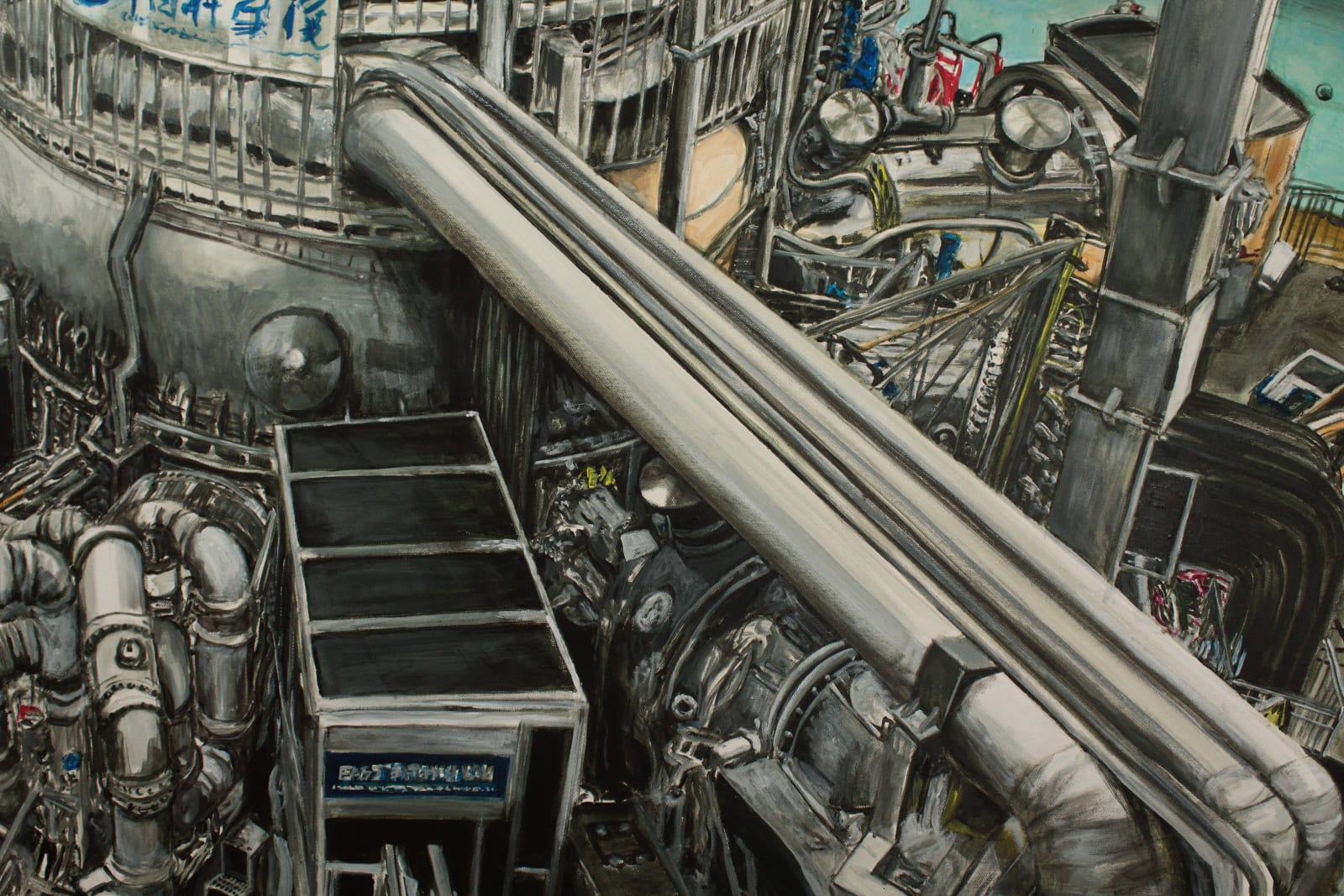Johans Peñaloza Chileno, 1989
Further images
Technology has become an integral part of all the social systems that ensure the cohesion, functioning and efficiency of these structures that sustain life in this century as we appreciate and inhabit it.
In terms of my working process, my paintings deal with the idea of instability, between a recognisable image and a piece whose title does not allude to anything specific. The medium - in this case, painting - is used in both formal and informal ways, destabilising the perception of what is real, referring to the instability between photography and reality, which are constantly perceived, recorded, reproduced and distributed through photographic devices and mass media, until they lose their origin and context in the interpretation of others. This instability is presented to the viewer in such a way that spots and lines of colour, when arranged, manage to represent the impression of light and shadow, of shapes and contours, together with the tones and textures captured by the photograph.
With this way of understanding what I paint, my current research focuses on using this medium to present images whose content corresponds to structures or tools developed by humankind, scientific achievements that open up possibilities for the development of human life today; a fact that at the same time carries the duty to be studied and developed with the corresponding responsibility, in a present where we still have territorial transformations, scarcity of resources and war conflicts.
My paintings move between abstraction and figuration, while the accidental and gestural aspects of my technique influence the final result to show us an appreciation of the real model to which the image belongs, to propose and treat the content that this painting represents as a sketch in pigments of the original image, rescuing the sharp and diffuse elements of the referent photograph from which this work originates.
In this case, the photograph corresponds to the Advanced Experimental Superconducting Tokamak, a magnetically confined fusion power reactor in Hefei, China. This piece of engineering from the Institute of Plasma Physics at the Chinese Academy of Sciences is a nuclear fusion reactor that has reached temperatures of 120 million degrees Celsius. This achievement should not leave any social group or individual indifferent, as in this decade we are witnessing unprecedented breakthroughs in human history.
At the same time, all this information about the referent turns this painting into yet another image in the vast network of information to which we all have access; yet another copy detached from its original form and presented to the viewer in an unstable form with only sharp lines and diffused spots.
In this way, I am delving into the possibility of posing the relationship between the image and science, narrowing the limit where the latter meets the arts, cooperating with each other. In this case, the intention is to relate the public to knowledge beyond their reach by forcing the medium to appear at the level where image search engines can recognise the referent used and to make the image be contemplated through the non-mediation of its content.
Ultimately, my work seeks to create a tension based on this instability between seeing a painting and, at the same time, seeing a representation of a scientific object whose referent means something more than an image made into a painting.
Johans Peñaloza, 2023.
Provenance
Artist's studioExposiciones
XVI Premio MAVI UC LarrainVial ARTE JOVEN - Group Exhibition. Museo de Artes Visuales. Santiago, Chile. June - August 2023.





